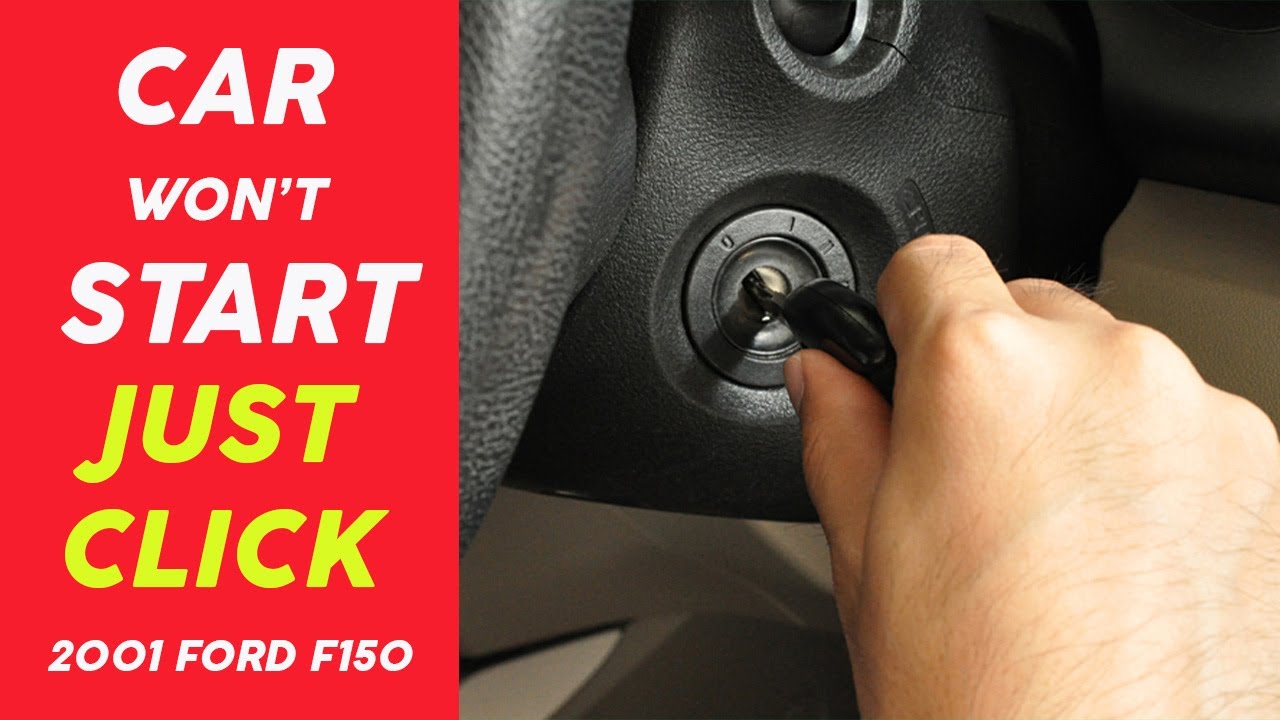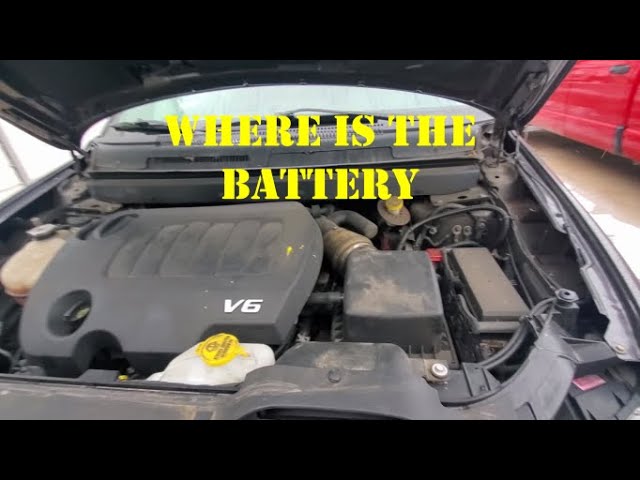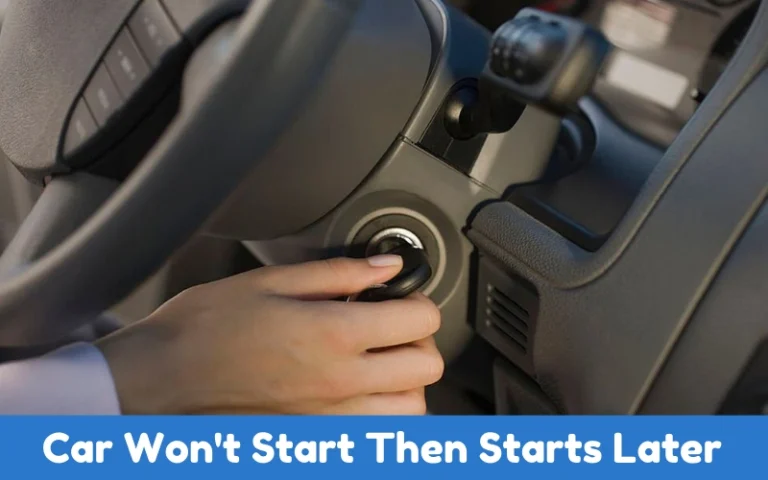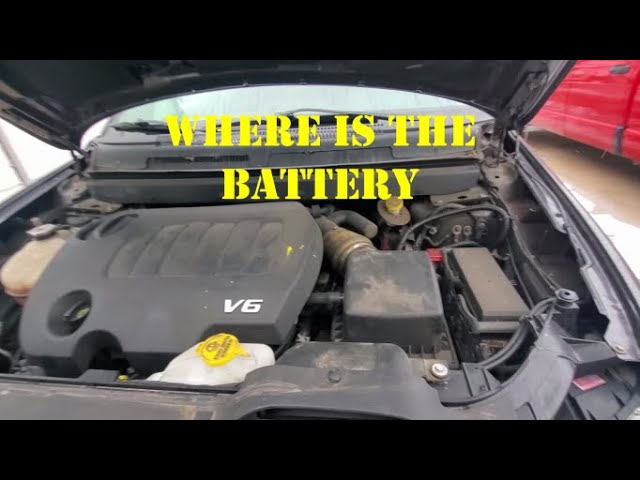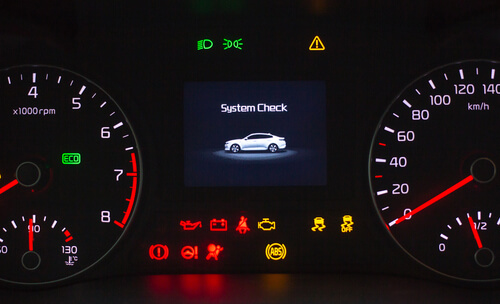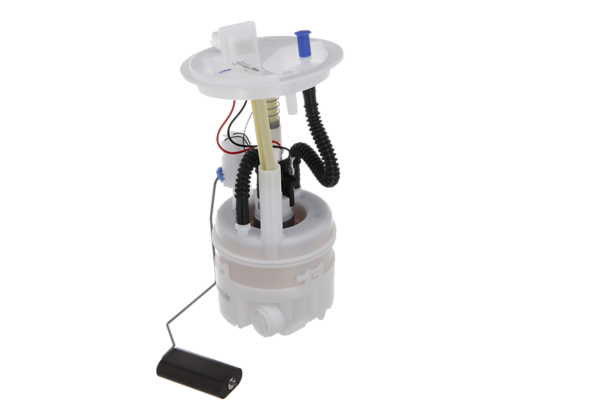Single Click When Trying to Start Car: Troubleshooting Tips
A single click when trying to start your car usually means a weak or dead battery, a faulty starter, or poor electrical connections. Check the battery voltage, inspect terminals for corrosion, and listen for additional sounds. If the battery is fine, the starter or solenoid may need replacement.
It’s frustrating, isn’t it? You might feel a mix of confusion and concern, wondering what could be wrong with your vehicle. But before you panic or start dialing your mechanic, let’s explore what that single click might mean. Understanding the potential causes can save you time, money, and perhaps a headache or two.
Dive in to discover why your car might be playing hard to get, and what you can do about it.
Common Causes
Experiencing a single click when trying to start your car can be frustrating. This issue often points to problems within the car’s electrical system. Understanding common causes can help you diagnose and potentially fix the issue yourself. Let’s explore some typical reasons behind that annoying click.
Read more: Fuel Pump: Essential Guide to Efficient Performance
Battery Problems
The battery is often the culprit for starting issues. A drained or weak battery can’t supply enough power. Check for corrosion on the terminals. It can impede the connection. Ensure the battery is securely connected. Loose cables can lead to problems.
Starter Motor Issues
If the battery is fine, the starter motor might be faulty. The starter motor is responsible for turning the engine. A malfunctioning starter can cause a clicking sound. Listen for unusual noises when starting. It might need replacement.
Faulty Ignition Switch
The ignition switch sends power to the starter. A faulty switch can disrupt this process. If the switch is worn out, it may fail to engage the starter. Check if the key turns smoothly. Roughness could indicate a problem.
Electrical System Malfunctions
Electrical issues can cause starting troubles. Inspect the fuses and wiring for damage. A blown fuse can prevent the car from starting. Check for signs of wear in the wiring. Damaged wires can interrupt the electrical flow.
Solenoid Problems
The solenoid works with the starter motor. A faulty solenoid can result in a click without starting. Listen for clicking noises near the engine. A damaged solenoid might need replacement. Ensure the solenoid is properly connected.
Read more: Mercedes Key Not Working Ignition: Troubleshooting Tips
Alternator Troubles
The alternator charges the battery while driving. If the alternator fails, the battery won’t charge. Check if the dashboard lights dim. Flickering lights can indicate alternator issues. Testing the alternator can confirm the problem.

Credit: www.facebook.com
Battery Issues
Experiencing a single click when starting your car often signals battery trouble. This issue may stem from a weak battery or corroded terminals. Quick checks can prevent further complications.
Experiencing a single click when trying to start your car can be frustrating. It’s a common issue that often points to battery problems. Let’s dive into the world of car batteries and see how you can tackle this issue yourself, potentially saving you time and money.
What Causes Battery Issues?
A car battery can face numerous challenges, from age-related wear to external factors like weather. If your battery is over three years old, it might be nearing the end of its life. Cold weather can also drain a battery faster, leaving you stranded on frosty mornings.
Signs Your Battery Needs Attention
Are your headlights dimmer than usual? Does your car struggle to start? These are telltale signs of a weak battery. Listen for slow cranking when turning the key. If you hear a single click, it might be time for a battery check.
How To Test Your Battery
You can test your battery at home with a multimeter. Set the multimeter to DC voltage and connect it to your battery terminals. A healthy battery should read between 12.4 to 12.7 volts. Anything below 12.4 volts means your battery might need charging or replacing.
Steps To Jump-start Your Car
Have jumper cables handy? You can give your battery a temporary boost. Connect your battery to a working battery from another car using the cables. Follow the sequence: positive to positive, negative to negative. Wait a few minutes before trying to start your car again.
How To Maintain Your Battery
Regular maintenance extends your battery’s life. Clean corrosion from terminals with a baking soda solution. Ensure the battery is tightly secured to prevent vibrations. Check the fluid levels if your battery isn’t sealed, and top it up with distilled water if needed.
When To Replace Your Battery
If your car continues to struggle, consider replacing the battery. Visit your local auto shop for a fresh one. Investing in a high-quality battery can save you from recurring issues.
Did You Know?
A small trick can help extend battery life: park your car in a garage during winter. This shields it from extreme cold, keeping the battery warm and functional. Are you ready to take charge of your car’s battery health? Assessing and addressing battery issues can prevent a single click from halting your day.
Starter Motor Problems
A single click when trying to start your car often signals starter motor problems. This sound means the starter motor is not engaging properly, possibly due to a faulty solenoid or weak battery. Addressing this issue quickly can prevent further damage to your vehicle’s electrical system.
Dealing with car issues can be frustrating, especially when you’re in a hurry. Imagine this: You turn the key, expecting your car to roar to life, but all you hear is a single click. This click often points to problems with the starter motor. The starter motor is essential for your car’s engine to start, and when it doesn’t function properly, it can lead to inconvenient mornings and missed appointments. Understanding the common issues with starter motors can help you get back on the road faster.
How The Starter Motor Works
The starter motor is a small but powerful electric motor. It engages with the engine’s flywheel to start the engine. When you turn the ignition key, the starter motor gets activated. This interaction is vital for your car to start. If the starter motor fails, your car won’t start. It’s that simple. Recognizing the signs of a failing starter can save you time and stress.
Common Signs Of Starter Motor Problems
Hearing a single click when you turn the ignition is a common symptom. This noise indicates that the starter motor is receiving power but isn’t engaging properly. Other signs include grinding noises, which could mean the starter gear is worn out. If your car starts intermittently, the starter might be to blame. Have you noticed any of these signs? It might be time to check your starter motor.
Simple Checks Before Calling A Mechanic
Before calling a mechanic, try these simple checks. Ensure your battery is fully charged. A weak battery can mimic starter motor issues. Check for loose or corroded connections. Inspect your vehicle’s fuses. A blown fuse can prevent the starter motor from working. Taking these steps could save you an unnecessary trip to the mechanic.
When To Replace The Starter Motor
Deciding when to replace the starter motor can be tricky. If you’ve tried the basic checks and your car still won’t start, replacement might be necessary. Consider the age of your car and the frequency of the issue. Older cars with frequent starting issues often benefit from a new starter motor. Is it worth the investment? Sometimes, a new starter motor can extend your car’s lifespan significantly.
Diy Or Professional Help?
Are you a hands-on car owner? Replacing a starter motor can be a satisfying DIY project. However, it’s crucial to have the right tools and follow safety guidelines. If you’re not comfortable under the hood, seeking professional help is wise. A skilled mechanic can diagnose and fix the problem swiftly. Which approach suits you best? Balancing cost and convenience is key when deciding.
Ignition Switch Faults
A single click when starting a car often points to ignition switch faults. This issue disrupts the electrical system, preventing the car from starting. Ignition switch problems can lead to frustrating delays and require immediate attention for safe driving.
Ignition switch faults can be a frustrating experience when you’re trying to start your car. That single click sound without the engine roaring to life might signal a deeper issue. It’s essential to understand how these faults occur and what can be done about them. With some knowledge and hands-on advice, you can tackle this problem head-on.
Understanding The Ignition Switch
The ignition switch is a critical component in your car. It’s not just about turning the key or pressing a button. It connects the battery to the starter motor, allowing your engine to start. If the switch fails, your car remains silent, leaving you stranded.
Signs Of Ignition Switch Problems
Have you noticed intermittent starting issues? Or maybe your dashboard lights flicker when you turn the key? These are signs that your ignition switch might be faulty. Pay attention to small quirks that seem out of the ordinary.
Why Ignition Switches Fail
Ignition switches can fail due to wear and tear. Frequent use can cause internal components to degrade. Sometimes, electrical faults or poor connections are the culprits. Ever wondered why your car starts after a few attempts? It could be an early warning sign.
Diy Troubleshooting Tips
You don’t always need a mechanic. Check your key for wear. A worn key might not properly engage the switch. Clean the switch area, ensuring no debris is blocking the connection. Testing the electrical connections can also reveal issues.
Professional Help And Solutions
If DIY doesn’t solve the issue, seek professional help. Mechanics can diagnose the problem accurately. Replacing the ignition switch might be necessary. Consider asking your mechanic about the cost and time involved. Ignition switch faults don’t have to ruin your day. With a bit of understanding and some proactive steps, you can tackle these issues confidently. Have you ever faced a stubborn car that just wouldn’t start? What did you do to resolve it? Share your experiences and insights; they might just help someone else.
Wiring And Connection Checks
Experiencing a single click when starting your car? Check the battery connections. Loose wires might cause this issue. Ensure all cables are tightly secured for a smooth start. Regular wiring checks can prevent this common problem.
If you’ve ever faced the dreaded single click when trying to start your car, you know the frustration it brings. Often, this issue can be traced back to faulty wiring or poor connections. Before you panic and rush to the mechanic, take a moment to check the wiring and connections yourself. Ensuring everything is in order might save you time, money, and a whole lot of stress.
Check Battery Connections
Start by inspecting the battery connections. Loose or corroded connections can prevent your car from starting. Look for signs of corrosion—white or bluish powder around the terminals. Use a wire brush to clean them up, and tighten any loose clamps. A personal experience: I once spent hours trying to diagnose a car that wouldn’t start. Turns out, a simple tightening of the battery clamp solved the issue. Sometimes, it’s the small things that make a big difference.
Inspect Wiring For Damage
Next, examine the wiring for any visible damage. Look for frayed wires or cracks in the insulation. Damaged wires can disrupt the electrical flow. If you find any defects, consider using electrical tape as a temporary fix until you can replace the wire. Have you ever thought about how a tiny crack can halt your journey? It’s surprising how a minor issue can cause a major inconvenience.
Verify Ground Connection
A solid ground connection is essential for your car’s electrical system. Trace the ground wire from the battery to the chassis. Ensure it’s securely attached and free from rust or damage. A bad ground can mimic a multitude of car troubles. Could your car’s refusal to start be due to a poor ground connection? It’s worth checking out.
Test Starter Wiring
The starter wiring is another critical area. Use a multimeter to check for continuity in the starter circuit. No continuity might indicate a broken wire or a faulty connection. This is a more technical step, but it’s crucial for diagnosing starting issues. Ever wondered why sometimes the car just clicks but doesn’t turn over? Faulty starter wiring could be the culprit.
Consult A Professional If Needed
If you’ve checked everything and the car still won’t start, it might be time to consult a professional. While DIY checks are helpful, some issues require expertise beyond a simple inspection. What’s your threshold for seeking professional help? Knowing when to step back can save you from further problems. Taking the time to perform these wiring and connection checks can make a significant impact. You might discover a simple issue that requires just a quick fix. Engaging with your car’s electrical system might seem daunting, but with patience and care, you can tackle these challenges.

Credit: revolutionmotors.ca

Credit: www.youtube.com
Frequently Asked Questions
Why Does My Car Only Click Once When Starting?
A single click often means a problem with the starter or battery. Check connections and charge.
Can A Weak Battery Cause Just One Click Sound?
Yes, a weak or dead battery can cause a single click. Test and replace if needed.
Is A Clicking Sound A Sign Of Starter Issues?
Yes, a clicking sound may indicate starter problems. Inspect or consult a mechanic for advice.
Single Click When Trying to Start Car
- A single click usually indicates a faulty starter motor, solenoid, or a weak battery.
- Corroded or loose battery terminals can prevent proper electrical flow to the starter.
- Ignition switch or neutral safety switch failure may also trigger a single click without engine turnover.
Conclusion
Car troubles can be frustrating. A single click might signal a problem. Check the battery first, as it often causes issues. Loose connections or corrosion can interrupt power flow. Starter motor failure may also cause a single click. Consider the ignition switch too.
It can wear over time. Regular maintenance helps prevent these issues. Always ensure your car is in good shape. This saves time and money in the long run. If problems persist, consult a professional. They have the expertise to diagnose and fix issues.
Stay safe and keep your car running smoothly.

